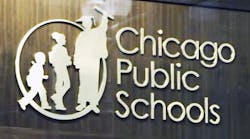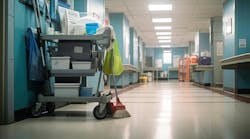Reporters love facts and figures, especially those found in studies and reports, and even more when the studies are generated by a governmental agency. Anecdotes and assertions from talking heads have their place, but there’s nothing like a solid number in the black-and-white pages of a federal report to give an article a “just the facts, ma’am” flavor.
That’s why readers of American School & University have seen the figure $112 billion numerous times in articles over the last 18 years (including this month’s cover story). It’s the amount that a 1995 report from the federal government’s General Accounting Office determined it would cost for the nation’s K-12 public school systems to bring education facilities into good condition.
The $112 billion number was a tangible—and massive—amount that gave those pushing for better school facilities a more concrete argument as they tried to persuade voters and legislators to provide more funding for facilities. Former President Bill Clinton credits the GAO report with helping to start a national conversation about the importance of healthful, well-maintained classrooms.
But now it’s 2013, the General Accounting Office is now the Government Accountability Office, and kids who weren’t even born when that report was released are just a few weeks away from completing their time in K-12 facilities. Education writers sometimes still reach back to quote the familiar and reliable, but somewhat archaic $112 billion figure; what we’d really like, though, is a new number.
So last month, when the U.S. Green Building Council’s Center for Green Schools issued its “State of Our Schools 2013,” journalists skimming through the verbiage quickly locked onto the dollar figure found in the report’s preface: $542 billion. That’s the “jawdropping” amount the center says it now will cost to renovate and modernize the nation’s K-12 school infrastructure to meet education, safety and health standards.
That’s definitely a figure to highlight in a headline—more attention-getting than any of the previous estimates that have been produced by other groups in recent years. But, the report concedes, the figure is only a “best guess.” What the center, like education writers across the country, really craves is the comprehensiveness and credibility that a government-conducted assessment of school facilities would provide.
What do you say, GAO?


